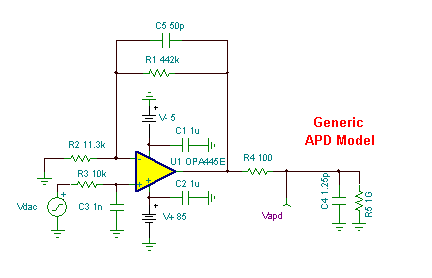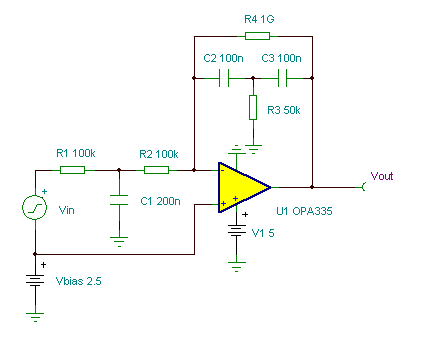Avalanche Photodiode Driver
An avalanche photodiode (APD) typically requires a high reverse bias voltage to provide gain. An OPA445 can operate on +/-45V supplies but in this circuit we require only one polarity output voltage so the op amp is operated on assymetrical power supply voltages. This is permissable if the op amp common-mode voltage range is not exceeded. (Circuit is created by Neil P. Albaugh)
Avalanche Photodiode Driver circuit:

Online Simulation of the “Avalanche Photodiode Driver” Circuit
The great feature of the TINA circuit simulator that you can analyze this circuit immediately with TINACloud the online version of TINA. Of course you can also run this circuit in the off-line version of TINA.
Click here to invoke TINACloud and analyze the circuit, or watch our tutorial video!
You can send this link to any TINACloud customers and they can immediatelly load it by a single click and then run using TINACloud.
Michael Koltai
www.tina.com




